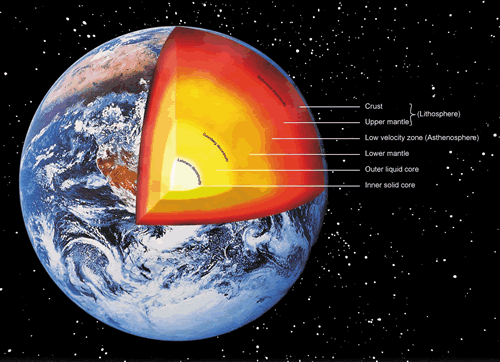
 |
During planet formation, innumerable small fragments of rock, metal, and ice collide and combine to form a larger body. Energetic collisions heat the growing planet, as does the decay of short-lived radioactive isotopes like Aluminum 26. Over billion-year time scales, radioactive Uranium, Thorium, and Potassium isotopes continue to release heat inside planets. Temperatures deep inside a large terrestrial planet, like Earth, are hot enough to melt iron (about 1535 Celsius or 2795 Fahrenheit). Interestingly, the innermost part of Earth's core is solid even though temperatures are still hotter - the high pressure from overlying layers of rock and iron is enough to force the inner core to remain solid. The actual temperature of the core is not precisely known, but the best estimates indicate that is between 5000 and 7000 degrees Celsius, or about as hot at the surface of the Sun. For more on the Earth's interior click here.
|
|
|
|
Image courtesy of the British National Space Center www.bnsc.gov.uk Return to the Astronomy Workshop
Return to the Astronomy Workshop